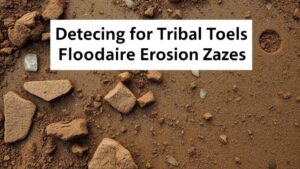Exploring Ancient Campsites Hidden Beneath Eroded River Bluffs
Exploring Ancient Campsites Hidden Beneath Eroded River Bluffs
The study of ancient campsites buried beneath eroded river bluffs has emerged as a significant area of archaeological interest. These hidden sites offer unique insights into the lives of early human populations, their migration patterns, and their adaptation to environmental changes. As riverbanks erode over time, they can expose well-preserved layers of human habitation that provide invaluable information about prehistoric lifestyles.
The Importance of River Bluffs in Archaeology
River bluffs serve as natural time capsules, protecting archaeological sites from some of the ravages of time. layers of sediment deposited by floodwaters can encapsulate human artifacts, remnants of fires, and even organic materials. As the bluffs erode, they inadvertently reveal these ancient sites, allowing archaeologists to study them without disturbing the surrounding landscape.
One pivotal case study that illustrates the importance of eroded river bluffs is the investigation at the Archaic site along the Mississippi River in Louisiana. Here, researchers uncovered tools dating back over 4,000 years, providing evidence of long-term human occupation and seasonal migration patterns that align with fluctuating river levels.
Methods of Discovering and Excavating Campsites
Archaeologists employ a variety of methods to uncover hidden campsites beneath river bluffs. primary techniques include:
- Remote Sensing Technologies: Techniques such as Ground Penetrating Radar (GPR) have become paramount in locating subsurface features without excavation. GPR can detect anomalies that indicate human activity, such as hearths or structures.
- Stratigraphic Excavation: Once a site is identified, researchers use stratigraphic methods to excavate layer by layer. This approach provides contextual understanding of the chronological sequence of human activity.
- Artifact Analysis: Detailed examination of artifacts recovered from the site allows researchers to infer the daily lives of the inhabitants, including their tools, dietary habits, and social structures.
Significant Findings from Eroded River Bluffs
Numerous discoveries from river bluffs have reshaped our understanding of ancient cultures. For example, the excavation of a site in the Pacific Northwest revealed a series of fire pits and tool caches that indicated a long-term seasonal fishing camp used by indigenous populations. Radiocarbon dating of the charcoal found in these fire pits dated back over 7,000 years, highlighting the areas continuous use for millennia.
Also, findings from the lower Great Lakes region have uncovered evidence of early agricultural practices among the Native American peoples. The presence of pottery and remains of domesticated plants among the sediment layers indicated a shift from nomadic lifestyles to more settled agricultural communities, showcasing a crucial transition in human history.
Challenges in Research and Preservation
While exploring eroded river bluffs offers unparalleled opportunities for discovery, it also presents several challenges. Erosion, climate change, and human activity threaten these ancient sites. For example, increased flooding and riverbank instability can result in the rapid loss of valuable archaeological information.
Plus, excavation itself poses risks. After extensive media coverage, sites may attract unregulated amateur digging, potentially damaging the integrity of the location. As a result, researchers advocate for stricter preservation measures and responsible excavation practices. Coordination with local governments and indigenous communities is essential in ensuring that these archaeological resources are protected for future generations.
Conclusion and Future Directions
The exploration of ancient campsites beneath eroded river bluffs is a captivating aspect of archaeological research that continues to yield significant findings about our ancestors. As technology advances, the potential for discovering and understanding these hidden sites expands. Future studies should not only focus on excavation but also on developing comprehensive conservation strategies to protect these invaluable cultural resources.
To wrap up, continued interdisciplinary collaboration is crucial. By integrating traditional archaeological techniques with innovative technological approaches, researchers can achieve a holistic understanding of the past while ensuring the legacy of ancient human habitation is preserved.
Actionable Takeaway: To further support archaeological efforts related to river bluff sites, individuals and organizations can participate in local preservation initiatives, promote awareness of archaeological ethics, and support funding for advanced research technologies.



